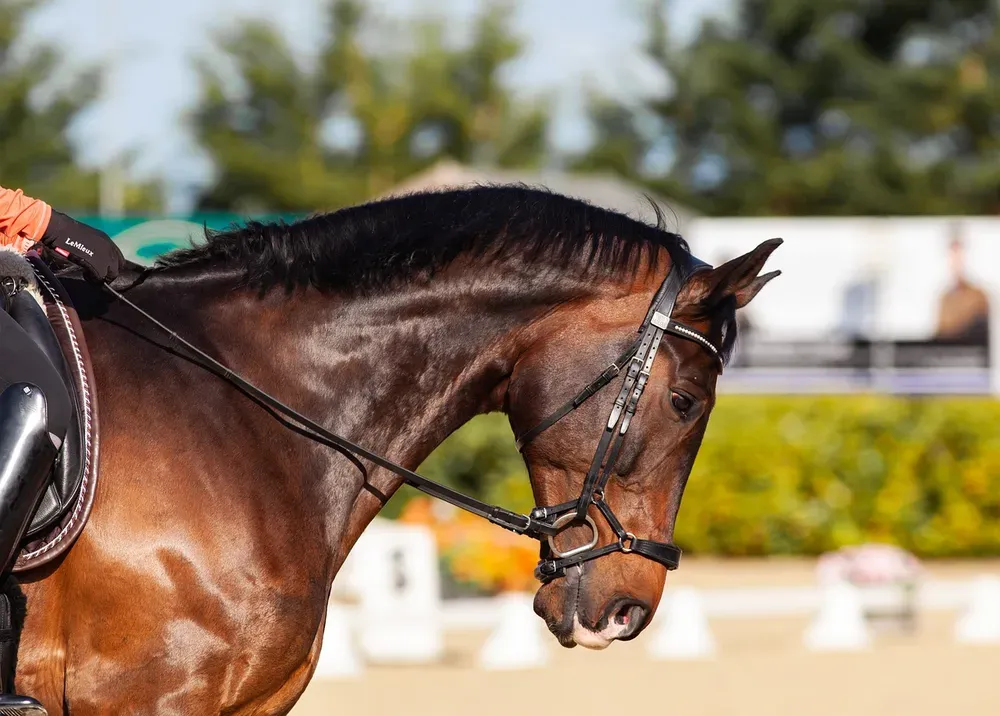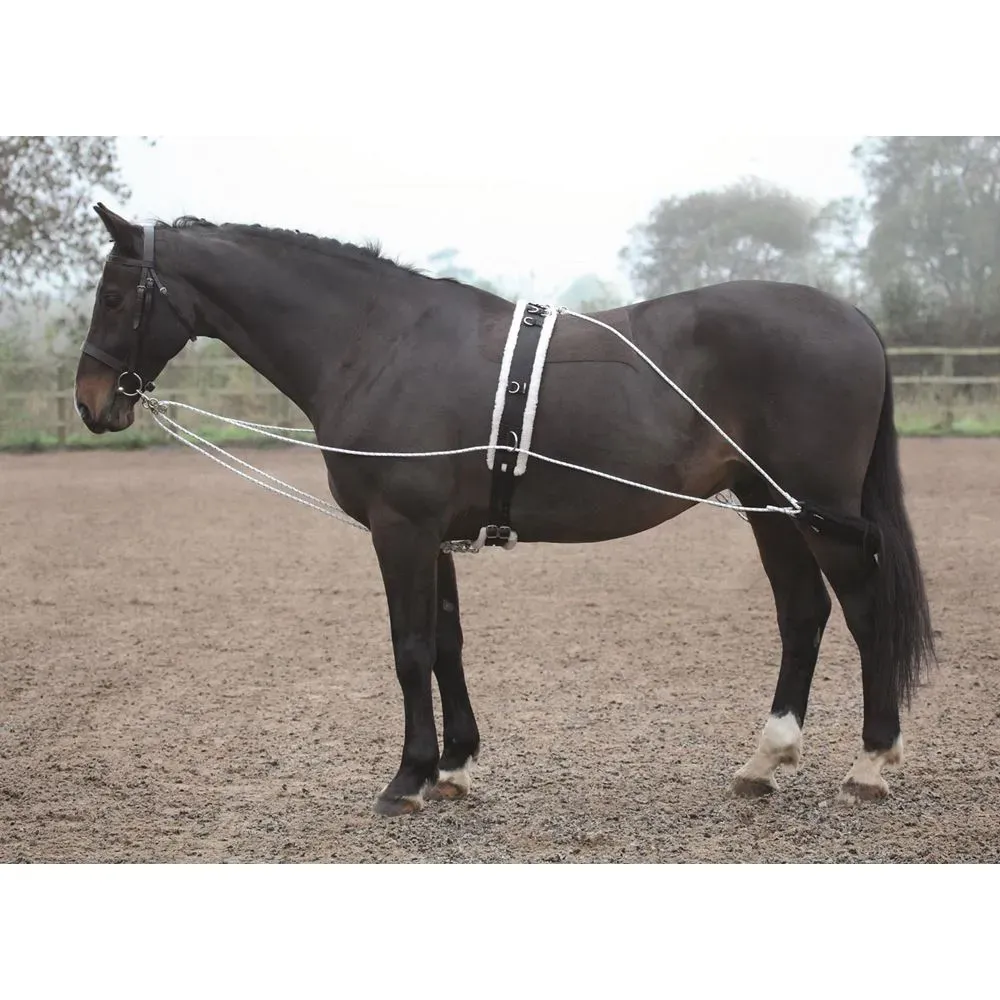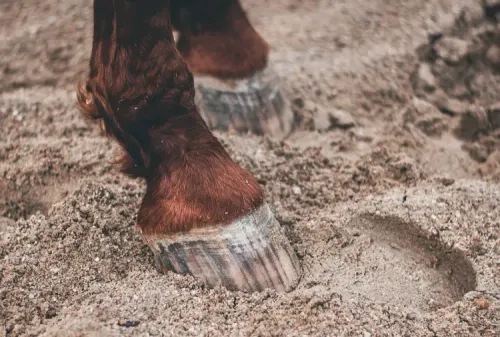
Table of Contents
What is Kissing Spine?
Kissing spine happens when the spinal vertebrae touch. This is called impinging dorsal fin and it ranges from a mild condition to one causing extreme pain. A kissing spine generally develops in the area under the saddle between thoracic vertebras 13 and 18, and thoracic vertebra 15 is the most common location. Horses are more likely to be affected in this region because here the vertebrae change their orientation and naturally sit closer together.
The exact cause of kissing spine is ambiguous!
It is thought that conformation and development cause kissing spine. There is also a genetic factor to this condition.
Will my horse get kissing spine?
Kissing spine can develop in any horse but racehorses and dressage horses are commonly affected. The condition is even found in unbroken youngsters and it is now suspected that kissing spine has a genetic dimension. Where both the sire and the dam have this gene it is more likely the foal will develop severe kissing spine.
Racehorses are susceptible because they move in a hollow outline and are not taught to round. Dressage horses are taught to round and develop core strength so it seems odd that they are also more susceptible to developing the condition. It is thought that more advanced dressage moves and lateral flections are the cause.
What are the symptoms my horse has kissing spine?
The inflamed vertebrae will cause pain and discomfort which will be noticed when his back is palpated. Badly affected horses frequently develop hind limb lameness and sacroiliac pain. Generally, your horse has behavioral changes when ridden or when he knows he is to be ridden, so we need to know what these changes are.
Things to look out for when saddling up
- Your horse pins back his ears and/or swishes his tail.
- An anxious expression.
- He shows the white of the eye if this is not normal for your horse.
- Bucking the saddle off or kicking at the human when the girth or cinch is tightened.
The above signs mean that your horse has a problem but not necessarily caused by kissing spine.
Things to look out for when riding
- Reluctance to move forward and an anxious expression.
- Pinning ears and swishing tail.
- A reluctance to do anything that was previously normal and poor performance.
- Extreme behaviors from rearing to bucking.
Again these signs mean your horse does not want to be ridden but the problem is not always kissing spine.
Kissing spine is not always painful !
The strange thing is that some horses with a kissing spine have no back pain or reduced performance.
So how do I confirm my horse has a case of kissing spine?
Ex-raying the sore back area will be the only way to confirm a case of kissing spine. It will show narrow spaces between the vertebrae and arthritic changes to the bone.
How will my horse's kissing spine be treated?
Painkillers and steroids
The first thing will be to rest the horse and give non-steroidal anti-inflammatory painkiller drugs. In addition, steroids can be injected between the spinous process and the associated muscles. Your vet might suggest shockwave therapy to the affected area.
Physiotherapy and strengthing
Many horses with a kissing spine must develop a stronger top-line and more abdominal strength. As part of this process, regular shockwave therapy and/or chiropractic and acupuncture therapies can permit enough pain relief for the horse can be trained to round its back and develop the necessary core strength. In this context, using the Pessoa lunging system rounds a horse's outline and permits the back to lift, and the stride to stretch.

The Pessoa lunging system
It must be used with caution as horses with a poor top line will initially find it hard to work in a rounded outline. This means that forcing them into a rounded shape for long periods can cause muscular pain and spasm.
The horse in this illustration has a good top line and will not find it a problem to use Pessoa lunging as part of their training program.
Surgical procedures
In severe cases, surgery is used and there are a few options:
1. Interspinous ligament desmotomy (ISLD)
ISLD involves cutting the affected interspinous ligaments and can be performed while a horse is sedated but standing.
2. Endoscopy
This is used to remove affected dorsal spinous processes and then to rejoin the ligaments between the processes.
Will I have to retire my horse with kissing spine?
Kissing spine affects individual horses in different ways and some show no clinical signs. Many horses with mild clinical signs return to work after treatment, and this is generally a multifaceted approach using a combination of procedures. Horses with severe kissing spine are usually retired and the prognosis for a horse depends on its age and the number of vertebrae affected.
Young horses up to the age of 5 generally have a poor prognosis, particularly if they have many spinal processes affected. Sometimes kissing spine is secondary to another spinal condition and in these cases, the prognosis is poorer.
The take-home message
Now you have read all about kissing spine you will have decisions to make about your horse's welfare. Kissing spine is not always a career-ending condition and with careful management and medical support, some horses can be ridden. Sometimes the horse will not be able to perform as well as before developing the condition. At the other extreme, there are cases where kissing spine is so extreme that the poor horse is euthanased.

Article Suggestion
All you need to know about SDFT Injury and your Horse
